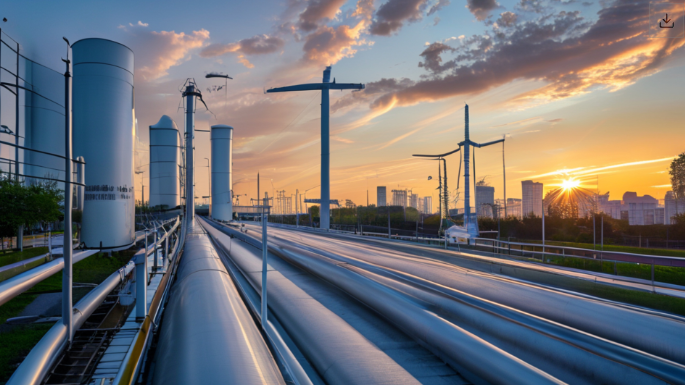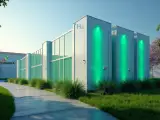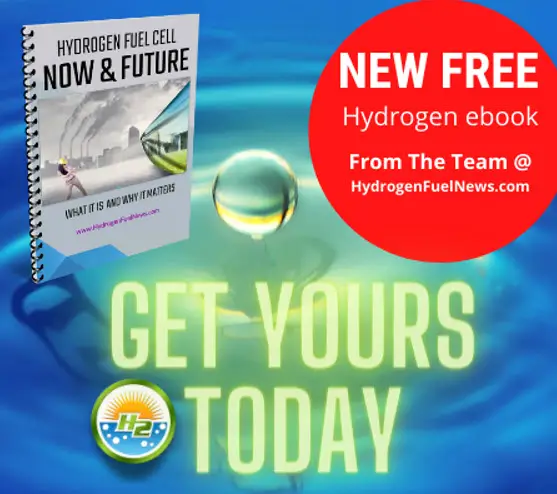
New Hydrogen Steel Pipelines & Air Liquide’s 300-Bar Hydrogen Filling Station Drive Clean Energy in China
April 2, 2025Air Liquide and cutting-edge advancements in hydrogen fuel cells and steel pipeline technology are paving the way for a revolution in clean energy transport across China.
Recent developments in the hydrogen space have grabbed the spotlight with the enhancement of steel pipelines designed to safely transport hydrogen and the launch of China’s first 300-bar hydrogen filling center. These innovations, led by major industry players like Air Liquide, represent key steps forward in overcoming the challenges associated with hydrogen embrittlement and establishing a robust infrastructure for hydrogen-fueled vehicles.
The project, spearheaded in China with significant support from government incentives and an ever-growing commitment to clean energy, is positioned to bridge the gap between traditional energy transport systems and a sustainable, zero-emission future.
Project/Initiative Details
One of the most talked-about challenges in the hydrogen arena is the issue of hydrogen embrittlement—a problem where the hydrogen molecules, being extremely small, penetrate the steel pipelines and compromise their structural integrity. Researchers are testing multiple strategies to overcome this dilemma:
Material Selection & Coating Innovations
Teams worldwide are evaluating various steel alloys, including high-strength low-alloy steels (HSLA) and austenitic stainless steels, which show greater resistance to hydrogen-induced damage. Additionally, innovative protective coatings like polymers, ceramics, and metallic layers are being applied to provide that extra barrier against hydrogen permeation.
Pipeline Design and Operation Enhancements
Optimizing design to limit stress concentrations and adapting operational pressures are proving to be pivotal. These measures ensure that existing natural gas pipelines can be repurposed cost-effectively for hydrogen transport, eliminating the need for costly overhauls.
Blending Strategies & Real-Time Monitoring
An exciting prospect is the integration of hydrogen with natural gas, where reducing the concentration of hydrogen not only eases the burden on steel but also makes use of pre-existing infrastructures. Moreover, incorporating advanced sensor networks for real-time monitoring could soon allow pipelines to alert operators about any early signs of degradation, making them safer and smarter.
Parallel to these technical advancements is the debut of a 300-bar hydrogen filling center by Air Liquide in China. This state-of-the-art filling station represents a crucial leap toward widespread deployment of hydrogen fuel cell vehicles, ensuring faster and more efficient fueling cycles which boost the overall convenience for users.
Context and Background
Historically, repurposing existing pipelines was a costly, decades-long endeavor. Now, thanks to these innovations, the transition is unfolding swiftly, stimulated by significant public-private partnerships and supportive governmental policies, particularly in places like China where energy security is paramount. This duality—both local and global—reinforces why these developments are causing such a stir in the sustainable energy and automotive industries.
Short- and Long-Term Implications
In the short term, these advancements promise notable improvements in the safety and efficiency of hydrogen transport. Enhanced steel pipeline technology not only reduces risks but also bolsters public confidence in hydrogen as a clean energy resource. On the ground, consumers and businesses alike can benefit from more accessible and rapid refueling options provided by the 300-bar station, thereby encouraging the adoption of hydrogen-powered vehicles.
Looking further ahead, the ripple effect is anticipated to be vast. The combination of repurposed pipelines and new filling station networks could lower hydrogen transport costs dramatically, making it competitive against fossil fuels. With more widespread adoption, we could see significant economic opportunities—from job creation in the building of hydrogen infrastructure to industrial decarbonization that helps major pollution-producing sectors transition to cleaner alternatives.
Challenges and Opportunities
No transformation is without hurdles. On the technical side, eliminating hydrogen embrittlement entirely remains a challenge, requiring continuous innovation in material science and coating technology. Regulatory frameworks too need to keep pace with these fast-moving advancements to ensure that safety and efficiency are not compromised. On the flip side, these challenges open the door for groundbreaking innovations. With robust research funding and collaborative efforts across industries, the opportunities for breakthroughs in safe hydrogen transportation and fueling infrastructure are immense.
About Air Liquide: Founded in 1902, Air Liquide is a global leader in industrial gases and has long been at the forefront of the hydrogen economy. With its commitment to sustainable and zero-emission technologies, the company continues to drive progress in hydrogen production, storage, and distribution, forming partnerships with key players across the automotive, energy, and aerospace industries.



 With over 15 years of reporting hydrogen news, we are your premier source for the latest updates and insights in hydrogen and renewable energy.
With over 15 years of reporting hydrogen news, we are your premier source for the latest updates and insights in hydrogen and renewable energy.